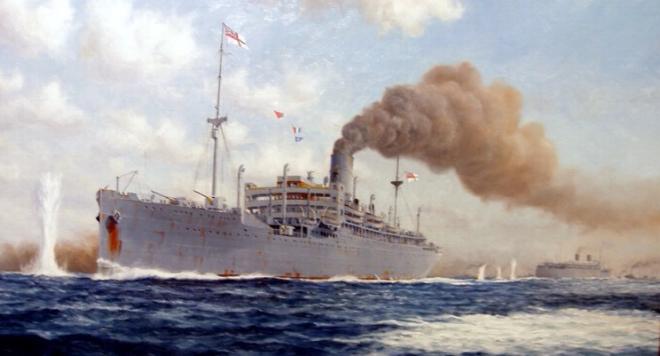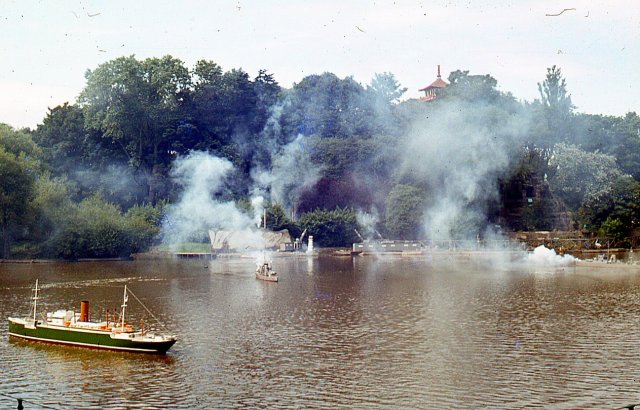Jul-2021
The Forgotten Heroics of the Royal Navy at the Battle of Flamborough Head
Our friends at Filey Bay 1779 have recently posted a wonderful piece illustrating the heroic role of the Royal Navy in the Battle of Flamborough Head. The actions of the two Royal Navy ships, out-numbered two to one and out-gunned, in protecting the valuable convoy they were escorting has often been lost in all the fanfare surrounding John Paul Jones and the Bonhomme Richard. This is unsurprising, as to the Americans the battle has become part of their self-identity and central to the nation building of the United States. We reproduce the piece in full below. It is worth a read to gain the full context of the battle and why Filey should celebrate an international event that ended in the shallow waters of our bay. And by the way, the battle should definitely be restaged on Peasholm Park lake in time for the 250th anniversary in 2029!
On 23 September 1779 Captain Pearson RN was tasked with escorting the annual convoy of merchant ships from the Baltic that delivered raw materials to the southern English ports that constructed, and serviced, the ships of the Royal Navy. When Captain Pearson spotted the Franco-American squadron commanded by John Paul Jones, he did not hesitate to place his frigate HMS Serapis and the sloop HMS Countess of Scarborough between the convoy and an enemy that out-gunned his ships by more than two to one.
Although the subsequent Battle of Flamborough Head saw the capture of both the Serapis and Countess of Scarborough, Captain Pearson saved the convoy he was escorting. In that respect he fulfilled his task. The loss of one frigate and a sloop was inconsequential to the Royal Navy, in complete contrast, the loss of the convoy would have seriously impacted British naval activities for months and several years. So whilst the Battle of Flamborough Head was undoubtedly a morale boosting, and even a nation affirming victory, for the emerging United States, it was also in some respects a victory for the Royal Navy. Captain Pearson’s unflinching defence of his convoy in the face of seemingly overwhelming odds reinforced a spirit of dogged defiance that had, and has, served the Royal Navy for centuries, from the Spanish Armada until the early years of the Second World War, when Britain stood alone against the Nazi threat.
The self-sacrifice that Pearson set has been mirrored many times, but perhaps none more so than in May 1940 when thirty-seven ship convoy HX84 from Halifax Nova Scotia to Britain was intercepted mid-Atlantic by the German pocket battleship Admiral Scheer. The convoy’s only escort was the armed merchant cruiser Jervis Bay. The former liner was armed with a mere seven 1898-vintage 6 inch guns and two 3 inch guns of 1894 design. She lacked any armoured protection. By contrast the Admiral Scheer boasted six 11 inch guns and was so fast that only a handful of the Royal Navy’s capital ships were able to catch, and outgun, her.
Yet, like Captain Pearson 161 years earlier, Edward Fegen, commanding the Jervis Bay, ordered his convoy to scatter and charged the German pocket battleship. It was an act of heroic self-sacrifice that captured the spirit of the nation. Isolated and hopelessly out-gunned, Captain Fegen accepted the challenge that fate had handed him. His ship was overwhelmed by gunfire, the range was such that they could not even reply, but for an hour the Jervis Bay held off the German ship, allowing time for the majority of the convoy to escape.

The Jervis Bay charges the Admiral Scheer to save the convoy
Captain Fegen, and the crew of the Jervis Bay, were rightly lauded as heroes. Fegen was posthumously awarded the Victoria Cross. He, along with 185 other crew members, went down with his ship. Sixty-eight survivors were plucked from the North Atlantic (three of whom later succumbed to their wounds).
The action is featured as part of the miniature naval warfare battle that takes place on Scarborough’s Peasholm Park lake every summer. One can only wonder how many of the watching holidaymakers are aware of the example set by Captain Pearson at the Battle of Flamborough Head so many years earlier? We feel that part of the remit of Filey Bay 1779 is to ensure that the heroic actions of the crews of the Royal Navy ships the Serapis and Countess of Scarborough are not forgotten.

Jervis Bay engages the Admiral Scheer on Peasholm Park Lake

comment this post